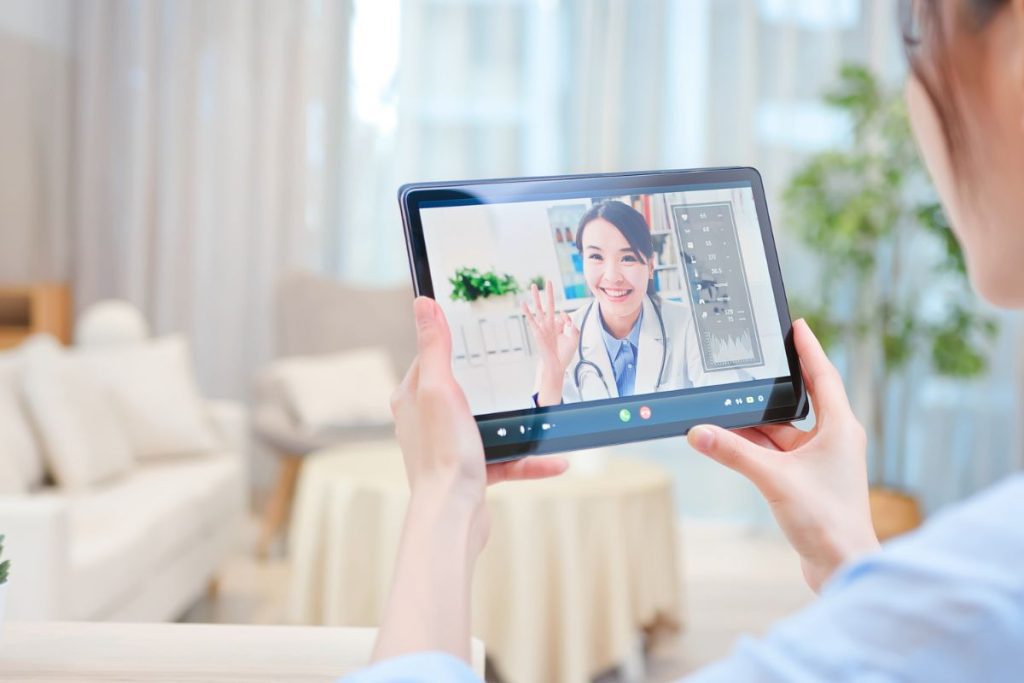As technology continues to advance, it has made life easier for people of all ages, including seniors. In recent years, there has been a significant shift in the way seniors age in place, largely due to the impact of technology. We’ll explore how technology is changing the way seniors age in place and the various benefits that come with it.
Disclosure: This blog may contain affiliate links, which means we may earn a commission if you click a link and make a purchase (at no additional cost). We only recommend products and services we use and trust. We aim to provide valuable, trustworthy resources that enhance and simplify your life. You can read our full privacy policy here.
What is Aging in Place?
Aging in place refers to the ability of seniors to live independently in their own homes rather than having to move into a care facility. This is a goal for many seniors, as it allows them to maintain their independence and dignity and stay in the communities they know and love.
However, as seniors age, they may experience physical or cognitive decline, making it difficult to continue living independently.
That’s where technology comes in. By providing seniors with access to new and innovative tools and devices, technology is helping them to maintain their independence and age in place for longer.

Remote Monitoring
One of the significant ways technology is changing the way seniors age in place is through remote monitoring. This involves the use of sensors, cameras, and other smart devices to monitor seniors’ movements and activities in their homes.
With remote monitoring, caregivers can track the seniors’ activities, including their sleeping patterns, medication schedules, and general health status. This technology also allows seniors to stay connected to their caregivers and loved ones.
For instance, wearable devices such as a smartwatch can track seniors’ daily activities, including their steps, heart rate, and blood pressure, and send this information to their caregivers. Additionally, home sensors can detect falls, unusual activity, or lack of activity and alert caregivers or emergency services.
We like
Alarm.com’s WellCam – the WellCam is a smart security camera with two-way communication capabilities and an activity sensor. It is part of
Alarm.com‘s Wellness independent living solution, which integrates a suite of sensors and devices. The WellCam camera features two-way audio and one-way video, utilizing artificial intelligence and machine learning to analyze the generated data and proactively detect changes that may indicate potential risks.
Telemedicine
Another way technology is changing the way seniors age in place is through telemedicine. Telemedicine involves the use of technology to deliver medical services remotely. With telemedicine, seniors can receive medical consultations, medication management, and monitoring services from the comfort of their homes.
This technology allows seniors to save time and money by avoiding unnecessary visits to the hospital or clinic. It also ensures that seniors receive timely medical attention, which can be critical in emergencies. Telemedicine also provides a way for seniors to receive mental health services, which is particularly important in the current climate.

Smart Home Technology
One of the most significant technological advancements in recent years has been the rise of smart home technology. These systems allow seniors to control their homes using voice commands, touchscreens, or mobile apps, making it easier to manage their homes independently.
For example, smart home devices such as
Amazon’s Alexa and
Google Home can be used to turn lights on and off, adjust the temperature, lock and unlock doors, and even start and stop appliances. These features can be beneficial for seniors with mobility issues or cognitive decline who may struggle with manual tasks. Voice-activated devices also allow seniors to stay connected with their loved ones.
Seniors can also use these devices to make calls, send messages, and order groceries. In addition, these devices can help seniors manage their daily tasks, such as setting reminders and creating shopping lists.
👉🏻 This step-by-step guide covers everything from setting up your Alexa device to customizing it to your specific needs ➡️ Seniors Guide to Alexa
Virtual Socializing
As seniors age, they may become more isolated due to mobility issues or the loss of friends and family. Fortunately, technology is providing a way for seniors to stay connected with others virtually. Virtual socializing involves video conferencing, social media, and other online platforms to interact with others.
For instance, seniors can use video conferencing platforms like
Zoom,
WhatsApp, and
Google Meet to attend virtual social events, such as book clubs or exercise classes. Social media platforms like Facebook and Twitter can also help seniors stay connected with their friends and family and engage with communities of interest.
Technology is transforming the way seniors age in place. From remote monitoring to telemedicine, voice-activated devices, and virtual socializing, seniors now have access to various technology-enabled solutions that make aging in place safer, more comfortable, and more connected. As technology continues to evolve, we can expect even more innovations that will benefit seniors and the people who love them.
✨ Stay up-to-date with the latest news and insights from True Assisting, delivered straight to your inbox. Click here to
subscribe to our newsletter!







